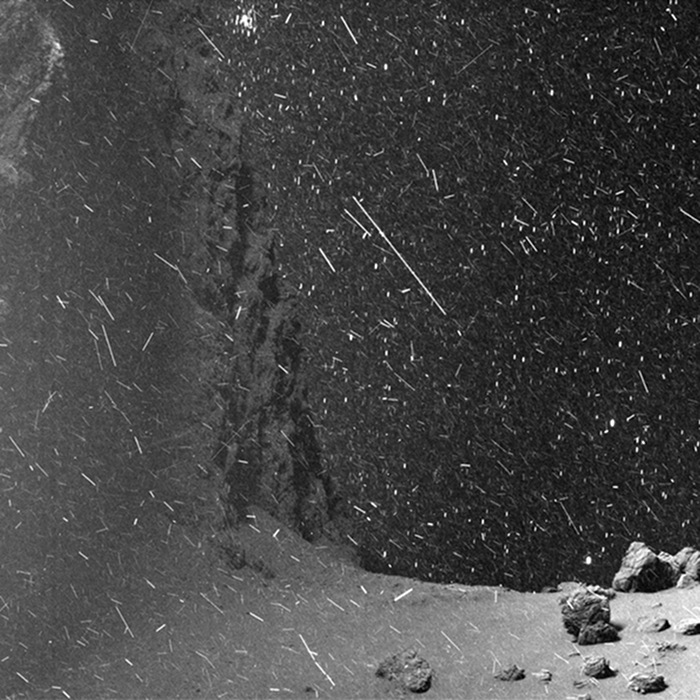V838 Monocerotis
The apparent movement of the matter around the star is an illusion. It was already there. The massive distances involved creates an effect known as light echos where the light from a brightening star reflects off of the closer parts of the cloud first and the further away parts years later this creates the illusion of a faster than light explosion but its really just light playing tricks with a relatively stationary interstellar cloud
spaceFrom a distance of about 700km, Ryugu's rotation was observed

Using the ONC-T (Optical Navigation Camera - Telescopic), asteroid Ryugu was photographed continuously from June 14, 2018 at around 21:00 JST through to June 15, 2018 at around 05:10 JST. Figure 1 shows a looped animation of the 52 captured images
spaceThe Snows of Churyumov-Gerasimenko

You couldn't really be caught in this blizzard while standing by a cliff on Churyumov-Gerasimenko, also known as comet 67P. Orbiting the comet in June of 2016 the Rosetta spacecraft's narrow angle camera did record streaks of dust and ice particles though, as they drifted across the field of view near the camera and above the comet's surface. Some of the bright specks in the scene are likely due to a rain of energetic charged particles or cosmic rays hitting the camera, and the dense background of stars in the direction of the constellation Canis Major. Click on this single frame to play and the background stars are easy to spot trailing from top to bottom in an animated gif (7.7MB). The 33 frames of the time compressed animation span about 25 minutes of real time. The stunning gif was constructed from consecutive images taken while Rosetta cruised some 13 kilometers from the comet's nucleus.
space rosetta 67p apotdA star turned into a black hole before Hubble’s very eyes

Only a few of these so called “massive fails” (yes, that’s what they’re calling them) have been spotted, so astronomers are cautious about the results. But this particular star, located in the galaxy NGC 6946, was bright enough to see from 22 million light years away and faded in an instant, suggesting a massive stellar-mass black hole was the driving culprit.
space apotd8 years ago permalink